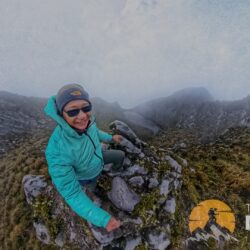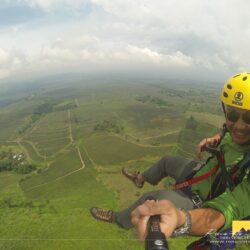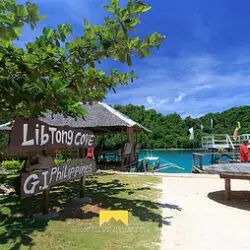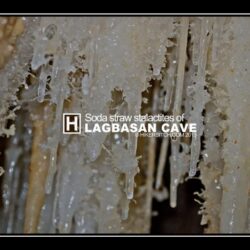I’ve given a no nonsense foreword about mountaineering gears and equipments before. There I said it that any mountaineer’s equipment is actually a reflection of the owners individuality- a personality cult. Included among these gears and equipments is your bakpack, your knapsack or the way I call it, your “sack”. But I’m going to veer away from the usual line of ‘reviews” or recommending a particular backpack that is normally above any ordinary mountaineer could afford. I’m going to rant about the poor climber’s way of finding a suitable pack, without hurting your back, or your pockets and still enjoy the outdoors here in the Philippines.
For one, mountaineering and climbing as a hobby is an expensive time killer. Try an accounting of your climbing gears and expenses and you’ll gasp in disbelief. So the average Pinoy is most likely either enjoying this hobby under equipped simply because he/she cannot afford the more expensive gears, or he/she totally shuns mountaineering at all! On the other extreme, trekking novices show off flashy, branded and often expensive equipments to mark their experience. Nothing wrong with that unless of course, you hurt your pockets too while taunting!
The bottom line
The backpack ( I call it a “house on your back” or”sack”) is one of those basic climbing equipment any mountaineer need. But backpacks should not necessarily be expensive. There are three things you need to know about a good sack for your back– durability, back-friendliness and cost. Cute backpacks are for schoolgirls.
The sack should withstand the rain forest’s environment!
Durability is a function of the backpack design, its fabric and how it is weaved into one great sack by the manufacturer. I’ve seen a climber reaching the top of Mt. Apo on a rainy day with just a plastic bag on his back. I am surprised too by another climber dodging rain forest vegetation with his skycraper backpack a foot high above his head. But I have yet to see a sack destroyed in the wilderness. So it all boils down to where you’re climbing, the type of terrain, the weather in there and the load you’re going to carry. In the tropical rain forest of the Philippines, I prefer the internal frame sack made of water repellent fabric, doubled knitted seams and waterproofed, with very good pads on back straps and a top compartment where I can put my emergency kit. Throw in a waterproof backpack cover and I’m ready to go.
The “sack” should be backfriendly.
When you choose a backpack, choose the one with the least weight. When I say lightweight, I mean close to carrying none . Most climbers recommend an upper limit of 30% of your body weight as the maximum carrying load. I tried this recommendation and believe me, I barely could walk a hundred meters up. So I climb with a load close to 20% of my body weight. More than this load, I’ve probably packed too much unessential or that I’m packing it the wrong way. The back friendly design of the pack (with the S shaped internal frame massaging the normal spine curves) and good packing techniques (see picture below) are essential considerations for me. When you strain your back muscles or sustain an acute low back pain after a climb, there’s a good probability your carrying an overweight pack. Besides, I hate carrying a heavy sack because I’d be missing the greater fun of being outdoors!
Buying an inexpensive but durable sack is fun!
Close to inexpensive, borrowing sacks from friends and climbers is a smart first move for novices. But make sure to replace the sack you destroy if you break what’s not yours. Besides, if you plan to make mountaineering a hobby, better invest a little on your own backpack for your future climbs! So where to get these inexpensive sacks?
The second hand market is littered with used mountaineering backpacks up for sale. Ebay and online sales forums are teaming with secondhand backpacks. You need some experience plus an “eye” when choosing backpacks from these sites though. The ‘eye” seem related to the experience with other qualities I mentioned earlier-durability and back friendliness. If your lucky, you might get a good backpack from climbers upgrading their sack. Good mountaineers are known to take care of their packs well.
Recently, UK2 (Ukay-ukay) is a serendipitous goldmine for inexpensive backpacks. Used, quality and good named backpacks land once in a while in these second hand markets. If you have the eye for a good pack, you might be lucky to get one good buy. Again, think of the backpack qualities I mentioned earlier.
But if you got the money for a nice new sack off the market, then there are quality local sack makers that are inexpensive and durable. Habagat and Conquer has been in the market for quite some time and newer brands keep propping up. Habagat produces quality packs that are widely adapted to the Pinoy outdoor environment. The North Face is also taking a portion of the backpack market especially with their heavy advertising. Watch out though, for you’ll need deeper pockets for their bags.
 The author’s TNF Spire 40li back pack he had since day one of his climbs. But its not up for sale though.
The author’s TNF Spire 40li back pack he had since day one of his climbs. But its not up for sale though.Remember that in buying or getting a backpack, the three essentials I mentioned a while ago should be the priority! And for me, getting a “house on your back” inexpensively is both fun and challenging! It requires a thorough understanding of backpack mechanics and your climbing experience. Take note that up there in rain and mud, that flashy back pack of yours is should be a sack to help your back, not hurt it!













